Atlantic Monthly Contributors's Blog, page 422
June 4, 2015
'Pele With a Skirt': The Unequal Fortunes of Brazil's Soccer Stars

When it comes to soccer, Brazil is known worldwide as the land of the magicians. There’s even a word for the specific fusion of sorcery and skill embodied by so many of the nation’s players: ginga, the Portuguese term for a certain kind of sublime deftness on the pitch, something incorporating both the sway of hips and unfettered imagination.
During the 2014 World Cup, the tournament felt similarly enchanted, with the endless goals in group play, the drastic reversals of fortune, and the impossible injury-time saviors. Even the spectacular failure of the Brazilian team at home felt otherworldly, with the squad too thoroughly ravaged for it not to have been fated. After more than a decade without a World Cup victory, Brazil forsook ginga in favor of a more aggressive determination to win at all costs, leading the World Cup in fouls committed. The 7:1 loss against the German team felt like a reprimand from the angered pantheon—a sign Brazil should get back to the magic and beauty it’s known for.
At that tournament, Neymar was the totem representing the ginga of the past; his pedestrian teammates throwing his extraordinary ability into sharper focus. When the striker’s injured vertebra prevented him from playing in the semi-final, the country mourned the loss of its magician.
But Neymar isn’t the country’s only hope.
In the 2007 World Cup semi-final against the United States, a then-21-year-old named Marta backheel-juggled the ball around one side of the defender, and pirouetted around the other before scoring, marking one of the first moments Brazil became aware of another magician in its midst.
Before Marta, futebol feminina was nearly unheard of. While women’s soccer had been popular in the early 1900s, with up to 40 women’s teams in Rio de Janeiro alone, it was banned in 1941, an embargo that wasn’t lifted until 1979. (The law stated that “women will not be allowed to practice sports which are considered incompatible to their feminine nature.”) The conception that women playing soccer is “unnatural” hasn’t entirely faded. But ginga, it turns out, overpowers prejudice: Brazilians couldn’t resist what Marta could do on the field. The newspaper headlines read “MARTA MARTA MARTA.” Pele himself referred to Marta as “Pele with a skirt.” She was named the FIFA World Player of the Year an unheard of five years in a row between 2006 and 2010.
Brazilians couldn’t resist what Marta could do on the field. Pele himself referred to her as “Pele with a skirt.”While Neymar has vaulted to colossal success around the world, with Barcelona paying a transfer fee of more than 57 million Euros to acquire him two years ago, Marta has struggled for the past eight years to find a league that could support her. Of the eight professional teams she’s played for in the past, seven have folded, unable to stay financially afloat. As she heads to the Women’s World Cup in Canada this month, she carries the complicated hopes of a nation that’s never found much reason to care about women’s soccer, even while it recognizes her exceptional skill on the field. Can she make people care? Can the admiration of her male counterpart, Neymar, force soccer fans and sponsors alike to recognize the ginga Marta embodies?
* * *
In December 2011, Marta and Neymar played together in a charity match. After the game, the pair high-fived, lacing their hands together and looking equally impressed by the other. When the reporter said, “Here we are with two crack players” (crack being the ultimate compliment in Portuguese), Marta responded, shyly, “He’s more crack.”
“Nah, nah,” Neymar said. “She’s the best in the world. I am so happy to have her here, to at least have the chance to play with her.”
Marta and Neymar are both jaunty tricksters who invent and surprise, both wearers of the iconic number ten jerseys, both Pele’s successors. While it’s well-known that Pele and Neymar played for Santos FC, the most storied club in Brazil, it’s less well-known that Marta did as well, in 2009 and then again in 2011. Santos Futebol Feminina was the best women’s team in Brazil, and with Erika, Cristiane, and Marta in their lineup, they were one of the best women’s teams in the world.
On the men’s side, when Neymar was courted by European clubs in 2010, it was Pele who urged Neymar to stay. And Santos management did whatever it had to in order to pay Neymar a salary that could compete with the European sides.
Including cutting the entire women’s team in 2011.
At a press conference, when a reporter asked Neymar if he felt bad that his high salary resulted in the dissolution of the women’s team, Coach Álvaro grabbed the mic before Neymar could respond. “I didn’t say that Neymar was guilty for the end of women's football,” he said. “What I said is that the goal of Santos is to have professional football that can last for hundreds of years. Other side activities [like the women’s team] are possible when possible. As we’re champions, wages are higher, the players are more expensive and we have to readjust.”
A reporter asked Neymar if he felt bad that his high salary resulted in the dissolution of the women’s team.The women’s team operating budget was 1.5 million reais a year ($667,000); the club was then paying Neymar 1 million reais ($447,000) a month.
Later Neymar would say, “Of course I was sad. If it’s possible to help, I’ll help. Not just me, I think all the players could help just a little bit so that the futebol feminina can return. The women have won titles for us too.” His anguish sounded sincere, as did his admiration for the women.
Neymar didn’t stay in Santos—in May 2013 he signed with Barcelona. The Santos women’s team has not been reinstated.
This wasn’t the first time Marta had played for a team that folded. Her debut squad, the women’s side at Vasco de Gama, shut down after two seasons; her next team, a club in Minas Gerais, did the same a season later.
In 2009, Marta went to play for what was the second attempt at a U.S. women’s professional league, Women’s Professional Soccer, and as MVP, she led the Los Angeles Sol to a league championship. At the end of the season, the Sol ceased operations. In 2010, Marta, again league MVP, led the Santa Clara team FC Gold Pride to another league championship. At the end of the season, FC Gold Pride ceased operations. In 2011, she led the Western New York Flash to one more championship. At the end of that season, the entire league folded. In 2012, she returned to Sweden, where she’d played for Umeå from 2004-2008—it seemed to be the one league she could rely on. She signed with Tyreso FC, who then won their regular season championship. In June, Tyreso FC announced their withdrawal from the 2014 league, citing a financial meltdown.
On the field, she always delivered, but FC Gold Pride—who, like Tyreso FC, found sponsors to cover her controversial six-digit salary—had banked on the power of her ginga to bring in revenue. “We weren’t selling out stadiums and Marta jerseys weren’t being sold off the racks,” FC Gold Pride general manager Ilisa Kessler says. “It was a bit of an experiment for us to see if there was any considerable incremental revenue that could be driven by a player like Marta. And that just did not happen.”
* * *
With reference to Neymar’s comment,“I think all the players could help just a little bit”— what would that look like? In England, when Chelsea FC’s professional women’s team suffered a funding crisis, the captain, John Terry, and other Chelsea players stepped in and offered financial assistance. But it’s difficult to imagine a world where male players habitually pitch in some of their millions to keep women’s soccer alive.
It’s less hard to imagine a potential partnership between the male and female professional organizations of the most soccer-mad country in the world. In Europe, many women’s teams are paired with a men’s professional team (such as with Paris Saint-Germain, Liverpool, Arsenal, and FC Bayern) that provides backing and allocates money for their women’s club. In the U.S.’ third reincarnation of a professional league for female players (the National Women’s Soccer League), the Portland Thorns, who are closely paired with the Portland Timbers, attract an average of over 13,000 fans per game—more than triple the average attendance of the other NWSL teams.
Marta, five-time World Player of the Year, struggles to find teams that remain financially solvent.But despite the modest success of a handful of leagues around the world, Marta, five-time World Player of the Year, struggles to find teams that remain financially solvent. After Tyreso went under, Marta approached Sweden’s FC Rosengard last year, who said they were ‘flattered’ but didn’t have the budget for her wages. She agreed to play for less, signing a six-month contract.
And in Brazil, futebol feminino remains largely invisible. Marta’s ginga doesn’t go unnoticed—national team supporters called for her to replace members of the struggling men’s side a few years back. But is it enough to buoy an entire game, similar to the way Neymar, her fellow magician, carried the men’s selecaco? Both on the field and in the public’s imagination, Neymar took the team on his shoulders—until his back literally broke.
On the field, Marta can do it all herself in a way that no other player can, but off the field, Neymar’s support could be just as significant as the women fight for exposure.
In the United States, Kobe Bryant raved about Marta in 2009:
My daughter [Natalia] plays AYSO soccer, right. The first time, she really didn't know what she was doing. I tried to work with her and stuff. Then we go home and I bring up Marta on YouTube and said, 'Watch this.' She sat there for like 15 minutes just watching. She's only 6, but she [recognizes] what's amazing. What [Marta] does is phenomenal. It's incredible. Marta's gifted, man. The things that she does on the pitch, I've just never seen anybody do, male or female.
Does this kind of audible, genuine admiration from cultural icons with huge followings have an impact? (Granted, Kobe’s comments didn’t help keep the LA Sol alive.) If Brazil saw their heroes—Neymar and the rest of the Brazilian squad—keenly following the women, tweeting, attending their games, would the country follow suit?
The inverse of this is already in effect—in the 2014 World Cup, the women enthusiastically cheered for the men; interviewed on Brazilian radio, when Erika was asked if she supported the national team in spite of the protests surrounding the Cup, she said, “I am Brazilian and it is in the blood. We don’t know how to not cheer for the team. I’ll cheer for our boys always.”
Could a collaboration between male and female players in advertising help? The Mia Hamm-Michael Jordan Gatorade commercial comes to mind. A garish song plays in the background—“I can do anything better than you”—as Mia throws Jordan to the ground. In this commercial, as well as Nike’s “I will have two fillings” ad campaign, the marketing heavyweights helped propel the women into the national consciousness and onto magazine covers. This surely influenced the level of support the 1999 women’s team enjoyed; selling out the Rose Bowl, and setting an all-time record for a women’s sporting event with 90,185 attendees. The public frenzy kickstarted the massive interest in female soccer—according to ESPN’s Front Row, a whopping 13 million girls currently play soccer in the United States.
It’s fun to imagine a Neymar and Marta commercial, or, say, a recast of the 1998 Nike ad with the Brazilian men juggling through the airport, but this time featuring Marta rainbowing the ball to Hulk, and Hulk lobbing it toward Erika. If you laced the women and men together, could this help give Marta, and as a result, futebol feminina, a sizable enough following to allow the women to make a living out of the game?
* * *
During the 2014 World Cup, Marta expressed concern about the lack of support for women players, saying, “Maybe one day we will have a strong competitive league instead of our women footballers always having to play abroad.” Professional women’s soccer players’ starting salaries in Brazil are close to minimum wage. (Full disclosure: I played for Santos FC in 2005. Nene, our leading scorer, had given up soccer twice previously because she could make more money to support her family by working at a toy factory outside of Sao Paulo.) Few games are televised, and the stands are usually empty.
While Title IX revolutionized women’s sport in the US, and allowed for opportunities way beyond the field, there’s no equivalent in Brazil.
There’s also an absence of support at the youth level. Around 400,000 girls play soccer in Brazil, considerably fewer than the US’s 13 million. Jonas Urias, a Brazilian club coach, estimates that there are only around 10 elite soccer clubs for girls under 17 nationwide.
So while the men’s selecao have been hailed as the magicians, winning five World Cups and amassing a bandwagon of supporters across the globe, the women’s side will be the ultimate magicians if they can manage to put together a World Cup winning team. While the men’s players were nurtured and groomed, the women’s ginga rose out of nothing.
While the men’s players were nurtured and groomed, the women’s ginga rose out of nothing.It will take more than Marta’s ginga to make a change, but initiatives, exhibitions, and female football collectives are cropping up throughout Brazil. Porto Alegre, a 2014 World Cup city, exhibited a photographic history of women in Brazilian futebol. In Sao Paulo, Bibi Martins created Pelado, a group of about 500 girls who play soccer everyday. The National Association of Women's Football, a grassroots umbrella group, formed two years ago, organizing women's teams and tournaments and advocating for more investment. The association now includes 200 teams across several Brazilian states.
The Guerreiras Project, founded by Aline Pellegrino, the former captain of the Brazilian women's national team, along with Caitlin Fisher, a Harvard grad and former Santos FC player, focuses on using the stories of female football players to initiate a conversation about gender equality. Professional female football players host workshops and visit neighborhoods, play with kids, showing them that women, too, can play futebol. The players hope that the kids will one day have the opportunities that they did not.
During the 2014 World Cup, in the moments before Brazil’s third-place game against the Netherlands, the Brazilian players sung the national anthem, each accompanied by one little kid (winners of a McDonald’s competition). The cameras lingered on the girl standing in front of Luiz Gustavo, who shouted out each word—it’s hard to imagine anyone anywhere singing any national anthem with more gusto.
Standing there alongside the Brazilian selecao, she was able to experience it, to see what it would be like to stand on the grass at midfield and look out at a packed stadium, your country watching, caring, following you no matter what.
When the 2015 Women’s World Cup kicks off in Canada, it’s a chance for Brazil to move past the memory of the 2014 humiliation. It’s a chance to win the nation’s first Women’s World Cup, and to revive the faith in ginga, and in national glory. But it’s also an opportunity for the women to show what they can do; what they could do if they weren’t constantly fighting for their shot.









Lincoln Chafee May Be Hillary's Biggest Problem
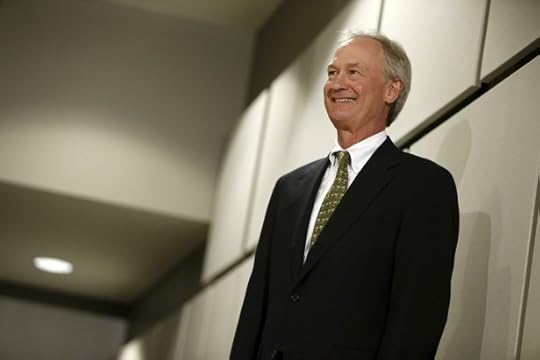
In a field of Democratic presidential long shots, former Rhode Island senator and governor Lincoln Chafee, who announced his candidacy on Wednesday, may be the longest shot of all. As an authentic, uncompromising progressive, Bernie Sanders is poised to grab the bulk of those Elizabeth Warren enthusiasts who can’t reconcile themselves to Hillary Clinton. As the handsome, articulate, two-term governor of a mid-size state, Martin O’Malley at least looks like a plausible contender one day. Chafee, by contrast, in the words of Quinnipiac University’s Monica Bauer, “has the charisma of Walter Mondale wrapped in the political instincts of a small town city councilman, which he once was, and perhaps would have remained, if he hadn’t been the son of a famous political dynasty. He is George W. Bush with more intelligence but far less political talent.” And like Bush, Chafee was, until very recently, a Republican.
But Chafee could prove Hillary’s most intriguing challenger. It’s not because he’ll garner enough support to give her a scare. If anyone does that, it will likely be Sanders, who according to the New York Times is already “gain[ing] momentum in Iowa.” What makes Chafee’s candidacy intriguing is that he’s attacking Hillary on the issue on which she may be most vulnerable: her vote to authorize war with Iraq.
“I don’t think anybody should be president of the United States that made that mistake,” Chafee told The Washington Post in April. “It’s a huge mistake, and we live with broad, broad ramifications today—of instability not only in the Middle East but far beyond and the loss of American credibility.”
A version of this attack helped Barack Obama topple Hillary in 2008. That’s not likely to happen again, since Democrats care far less about Iraq this time.
But Republicans do. While foreign policy has been largely absent from the Democratic presidential campaign thus far, it’s been central to the Republican debate. And this reflects a divide in the country as a whole. A May Wall Street Journal/NBC poll found that “national security/terrorism,” which was the top concern of only eight percent of likely GOP primary voters three years ago, now ranks first, at 27 percent. Among likely Democratic primary voters, by contrast, it’s less than half that.
Related Story
The 2016 U.S. Presidential Race: A Cheat Sheet
Iraq sits near the center of that concern. Every Republican presidential candidate except Rand Paul is telling the same story: By 2008, as a result of George W. Bush’s surge, America had won the Iraq War. But then Barack Obama snatched defeat from the jaws of victory by recklessly withdrawing US troops. Since then, the Middle East has descended into the depths of hell, and become a petri dish breeding ISIS barbarians eager to strike the United States.
The best answer to this line of attack is the one Hillary can’t give: that America should never have invaded Iraq in the first place. After all, it wouldn’t have been necessary to stitch the Iraqi state back together between 2006 and 2008, at a vast cost in money and blood, had the United States not shattered it in the first place. But Hillary can’t give that answer because she voted to authorize the war.
That’s what makes Chafee’s attack intriguing. He was the only Republican senator who voted against authorizing war. Now, as a Democratic candidate for president, he will talk about the collapse of Iraq and the rise of ISIS in a way she can’t. And the way Hillary responds to him will preview her response to the Republicans next fall.
Finding a good answer won’t be easy. On domestic issues like gay marriage, mass incarceration, immigration, and campaign finance, Hillary has shifted left in the primary, confident that she’s keeping pace not only with Democratic primary voters but with the country as a whole. But on foreign policy, the public isn’t moving left; it’s moving right. And Hillary cannot as easily adapt her views to match that shift because until two years ago, she was secretary of state.
Hillary’s greatest challenges may not be policy-based at all. They’ll likely stem from questions about her honesty, and the sense that she represents not the future but the past. But if there’s one policy question that could prove dangerous, it’s Iraq. On that subject, Lincoln Chafee is the canary in the coal mine. If Hillary can’t find an effective answer to his attacks, it may be a sign of trouble ahead.









June 3, 2015
Why Is It So Hard to Track Police Killings?

The recent spate of highly publicized killings of black men by police officers has driven many people to wonder how common such police violence is. Incredibly, no one knows—not even FBI Director James Comey. The federal government doesn’t track it, and until this week, no one else did either.
Earlier this week, The Washington Post and Guardian set out to catalogue the number of times people are killed by police—the Post focusing on firearms deaths, while The Guardian looked at all fatalities. They got the data by poring over news accounts, police reports, and other records, trying to get a full picture. Because they use different methods and track slightly different things, they also come up with two different totals—385 so far this year in the Post, 470 for The Guardian.
The federal government could theoretically compel local law enforcement to produce the information, guaranteeing reliable and uniform reporting. So why hasn’t it done so? Tracking and reporting these numbers provides an empirical basis for political debate, and shifts the focus from documenting the problem to proposing solutions.
“It is the most important regulatory tool that the federal government now has for local police departments.”Senators Barbara Boxer of California and Cory Booker of New Jersey announced a bill Tuesday that tries to solve the problem. The Police Reporting Information, Data, and Evidence Act of 2015 (the name creates a ghastly backronym, the “PRIDE Act”) is a fairly straightforward bill: It creates grants to states and in return requires them to record and report to the Justice Department every case in which an officer shoots or causes serious bodily injury against a civilian, and every case in which a civilian shoots or causes serious bodily injury to an officer. They would also have to report basic demographic data for all victims. The text is short and simple.
The PRIDE Act covers some of the same territory as the Death in Custody Reporting Act, an old law that fell off the books but was renewed in late 2014. The reason the PRIDE Act is still necessary is that its predecessor is widely considered ineffectual. Unfortunately, it’s not entirely clear that the PRIDE Act will solve its problems, as Franklin Zimring, a professor of law at the University of California at Berkeley who has long studied police use of force, told me.
The new bill and the old law share two salient features: They rely on states to provide the information needed, and they use federal grants as the mechanism for compliance. The way they handle the grants is a little different, though. The DCRA threatens to cut existing federal funding to states if they don’t report their numbers. Withholding federal grants, however, hasn’t always been a successful tool to make states comply with laws they don’t like. The Adam Walsh Child Protection and Safety Act, which uses the same mechanism, has only enlisted 17 states. The PRIDE Act instead creates new grants, relying more on carrots than sticks to achieve its aims.
That seems to answer the concerns often raised by local law enforcement agencies. Last fall, James Pasco, executive director of the Fraternal Order of Police, warned The Washington Post’s Wesley Lowery that any proposal to gather data that didn’t provide money for its collection was dead on arrival. “Otherwise it’s an unfunded mandate,” he said. “About 80 percent of police departments have fewer than 10 officers. They don’t have huge data collecting operations. They don’t even have a single person in some of these departments who are dedicated to all the statistical work they have to do now.”
The PRIDE Act might solve that problem (though its cost to taxpayers is unclear), but Pasco’s qualms spotlight the other potential pitfall in the bill.
“The states employ less than 5 percent of the police officers and sheriffs that operate in the state. How are they going to get the information?” Zimring wondered.
It’s a real problem. The Bureau of Justice Statistics tallies more than 12,000 local police departments, and there are thousands of sheriffs, too. As Pasco noted, few of these departments have statistics sitting around, just waiting to be collected by the state. That means the states, in turn, also don’t have the statistics sitting around, just waiting for Congress to pass a law requiring them to send the data to Washington. From a legislative standpoint, it’s much easier to institute a mandate on the states than it is to design—and fund—a program that collects data from every local authority. But it also reduces the chances of harvesting reliable, comprehensive data.
Related Story
The Missing Statistics of Criminal Justice
This isn’t the first time that Congress has sought to scrutinize questionable practices in local policing. The last major national outcry over police brutality was in 1992, when riots broke out after Los Angeles police officers were acquitted in the beating of Rodney King, which had been videotaped. Those riots produced a huge amount of media attention, and they also produced calls for reform.
Then-Representative Henry Waxman, a California Democrat, tried to pass a law that would allow the Justice Department to investigate local police departments and sue them for excessive use of force. The bill went nowhere. But in 1994, Waxman managed to get it included in the Violent Crime Control and Law Enforcement Act of 1994, which did pass. The relevant bit, Section 14141, makes it illegal for police to “engage in a pattern or practice of conduct ... that deprives persons of rights, privileges, or immunities secured or protected by the Constitution or laws of the United States.” There’s serious irony here: The act as a whole signaled a major expansion of incarceration and federal involvement in crime. It created many of the tough-on-crime policies that are often blamed for the current backlash against cops, and yet it also includes the tool that Attorney Generals Eric Holder and Loretta Lynch have used to push back against abuses.
“It is the most important regulatory tool that the federal government now has for local police departments,” Zimring says. “That more than anything else is the most substantial legacy of the King case.”
For example, the consent decree that the Justice Department recently announced with Cleveland over a pattern of excessive use of force by officers sprung from an investigation conducted under the auspices of Section 14141. There have been similar agreements with Albuquerque, Oakland, Seattle, and Los Angeles. An investigation that Baltimore requested into its own police department also falls under the statute.
Section 14141 was effective largely because it allows the Justice Department to go directly to local police departments, investigate them, and force them to make concessions. When Section 14141 was passed, though, few expected the small piece of legislation to have a huge impact on a public debate 20 years down the road. If Congress can devise an effective mechanism for gathering data on police-related deaths, perhaps it can produce a similarly outsized impact. In the meantime, that hole in the data seems likely to remain a major obstacle to police reform.









The 2016 U.S. Presidential Race: A Cheat Sheet

Lincoln Chafee will not win the presidential nomination. Even in a field of longshot candidates challenging Hillary Clinton, his candidacy seems singularly improbable. In fact, his announcement that he was forming an exploratory committee was met with complete surprise—no one had expected him to run.
One reason is that Chafee’s approval rating as Rhode Island governor dipped as low as 26 percent in 2013, contributing to his choice not to run for reelection. By the time he left office, he was a Democrat, though he’d entered as an independent and previously served in the U.S. Senate as a Republican. Meanwhile, he carries all the dynastic baggage of Hillary Clinton and Jeb Bush—his father was a longtime U.S. senator—but without the profile. Few reporters have treated him as a serious candidate; as the AP’s Lisa Lerer noted, his wife complained on Facebook of little publicity three months after his initial announcement: “No one has contacted him. so SAD!”
There’s one good reason to pay attention to Chafee’s campaign, though, and that is the central issue of his campaign: the Iraq War. Chafee, who was the lone Senate Republican to vote against the war in 2002, says that Hillary Clinton’s vote in favor should disqualify her from the presidency. That's unlikely to push him ahead of her, but the role of the Iraq War is worth watching.
In 2008, of course, it was a decisive factor in Clinton’s defeat by Barack Obama. But the question has largely fallen off the Democratic Party’s list of litmus tests since then. Iraq and the willingness to get involved in potential future wars also poses a quandary for Republicans. Jeb Bush, delicately trying to deal with his brother’s legacy, has already stumbled badly on how he would have handled the war. Hawkish GOP candidates have to make a case to war-weary voters without appearing too ready to rattle sabers. So Lincoln Chafee may not be destined for the top tier of candidates, but his entry—announced Wednesday evening at George Mason University, in a bizarre speech where he called for implementing the Metric system—may push foreign policy toward the center of the Democratic contest.
With so many candidates in the mix—some announced, some soon to announce, and some still on the fence—it’s tough to keep track of it all. To help out with that, this cheat sheet on the state of the presidential field will be periodically updated throughout the campaign season. Here's how things look right now.
* * *
The Democrats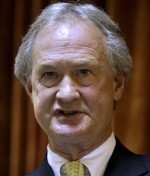 Steven Senne / AP
Steven Senne / AP Lincoln Chafee
Who is he? The son of beloved Rhode Island politician John Chafee, Linc took his late father’s seat in the U.S. Senate, serving as a Republican. He was governor, first as an independent and then as a Democrat.
Is he running? He’s announcing his run at George Mason University on June 3.
Who wants him to run? No one knows! Chafee's exploratory committee came out of nowhere, with little anticipation or fanfare or even rumors. He opted not to seek reelection as governor in 2014, in part because his approval rating had reached a dismal 26 percent.
Can he win the nomination? No. Chafee seems to be positioning himself as an economic populist and says Clinton's 2002 vote for the Iraq war should disqualify her (he was the only Republican senator to vote against it). In other words: He's Jim Webb with a less impressive resume, a less compelling bio (he's the son of longtime Senator John Chafee), and less of a political base. He gives himself even odds, though.
Does his website have a good 404 page? No.
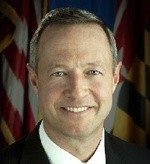 Wikimedia
Wikimedia Martin O'Malley
Who is he? He’s a former governor of Maryland and mayor of Baltimore.
Is he running? Yes. He announced his campaign on May 30.
Who wants him to run? Not clear. He has some of the leftism of Bernie Sanders or Elizabeth Warren, but without the same grassroots excitement.
Can he win the nomination? At the moment, O’Malley seems caught between Sanders, who has grasped the progressive mantle, and Clinton, who dominates the Democratic race overall. As with Sanders, though, it’s hard to see where O'Malley would get an opening unless Clinton’s campaign fell apart. The conventional wisdom since protests over the death of Freddie Gray is that protests in Baltimore undermine the case for his candidacy and make it harder for him to run, but he’s embraced the protests as a motivation for his run.
What else do we know? Have you heard that he plays in a Celtic rock band? You have? Oh.
Does his website have a good 404 page? No.
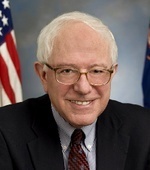 Wikimedia
Wikimedia Bernie Sanders
Who is he? A self-professed socialist, Sanders represented Vermont in the U.S. House from 1991 to 2007, when he won a seat in the Senate.
Is he running? Yes. He announced April 30.
Who wants him to run? Far-left Democrats; socialists; Brooklyn-accent aficionados.
Can he win the nomination? No, although his campaign seems more about getting his ideas into the mix than about winning. In particular, he's an outspoken opponent of the Trans-Pacific Partnership, the free-trade agreement President Obama is pushing. Hillary Clinton once seemed to back the deal, but she's offered far more equivocal statements since declaring her candidacy. But Sanders came out of the gate with strong fundraising numbers and has testily rebuffed reporters who suggest he can't win.
Does his website have a good 404 page? Yes, and it is quintessentially Sanders.
 Wikimedia
Wikimedia Hillary Clinton
Who is she? As if we have to tell you, but: She’s a trained attorney; former secretary of State in the Obama administration; former senator from New York; and former first lady.
Is she running? Yes.
Who wants her to run? Most of the Democratic Party.
Can she win the nomination? Duh.
What else do we know? Maybe a better question, after so many years with Clinton on the national scene, is what we don't know. Here are 10 central questions to ask about the Hillary Clinton campaign.
Does her website have a good 404 page? If you’re tolerant of bad puns and ’90s outfits, the answer is yes.
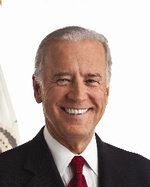 Wikimedia
Wikimedia Joe Biden
Who is he? Biden, a longtime Delaware senator, is vice president and foremost American advocate for aviator sunglasses and passenger rail.
Is he running? He won't rule it out, but he's made no serious steps toward a run. He's addressing a "secretive" group of gay donors on May 2.
Who wants him to run? Joe Biden, maybe. The group Draft Biden (slogan: “I’m Ridin’ With Biden”) continues to do its best.
Can he win the nomination? If Clinton didn't run, it would throw the Democratic field into disarray. But probably not.
When will he announce? It seems ever more likely that he won't.
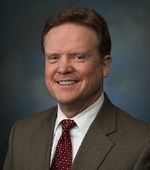 Wikimedia
Wikimedia Jim Webb
Who is he? Webb is a Vietnam war hero and secretary of the Navy. The author of several books, he served as a senator from Virginia from 2007 to 2013.
Is he running? He has launched an exploratory committee.
Who wants him to run? Dovish Democrats; socially conservative, economically populist Democrats; the Anybody-But-Hillary camp.
Can he win the nomination? Probably not.
Does his website have a good 404 page? No.
 Wikimedia
Wikimedia Elizabeth Warren
Who is she? Warren has taken an improbable path from Oklahoma, to Harvard Law School, to progressive heartthrob, to Massachusetts senator.
Is she running? No. Seriously, no.
Who wants her to run? Progressive Democrats; economic populists, disaffected Obamans, disaffected Bushites.
Can she win the nomination? No, because she's not running.
* * * The Republicans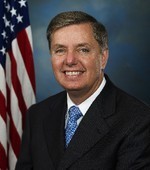 Wikimedia
Wikimedia Lindsey Graham
Who is he? A senator from South Carolina, he’s John McCain’s closest ally in the small caucus of Republicans who are moderate on many issues but very hawkish on foreign policy.
Is he running? He sure is. Graham kicks off the campaign June 1.
Who wants him to run? John McCain, naturally. Senator Kelly Ayotte, possibly. Joe Lieberman, maybe?
Can he win the nomination? Not really. The South Carolina senator seems to be running in large part to make sure there’s a credible, hawkish voice in the primary. It seems like Graham started his campaign almost as a lark but has started to enjoy the ride, plus he’s shown he’s a great performer on the stump. Molly Ball explores his chances at greater length here.
What else do we know? It’s still amazing that the man has never sent an email.
 Michael Vadon
Michael Vadon George Pataki
Who is he? Pataki ousted incumbent Mario Cuomo in 1994 and served three terms as governor of New York.
Is he running? Yes. He announced May 28.
Who wants him to run? It's not clear. Establishment Northeastern Republicans once held significant sway over the party, but those days have long since passed.
Can he win the nomination? No. As my colleague Russell Berman previously noted, Pataki is one of the longest of the long-shot GOP candidates. He has touted his leadership on 9/11, when he served as governor, but so did former New York City Mayor Rudy Giuliani. He was also a successful conservative governor in a deep-blue Northeastern state, but so was former Massachusetts Governor Mitt Romney. He seems be socially liberal enough to alienate primary voters, but not enough to capture Democrats.
Does his website have a good 404 page? No.
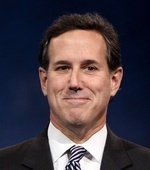 Gage Skidmore
Gage Skidmore Rick Santorum
Who is he? Santorum represented Pennsylvania in the Senate from 1995 until his defeat in 2006. He was the runner-up for the GOP nomination in 2012.
Is he running? Yes, with a formal announcement on May 27.
Who wants him to run? Social conservatives. The former Pennsylvania senator didn't have an obvious constituency in 2012, yet he still went a long way, and Foster Friess, who bankrolled much of Santorum's campaign then, is ready for another round.
Can he win the nomination? It's tough to imagine. Santorum himself said his chances would hinge on avoiding saying "crazy stuff that doesn't have anything to do with anything." For now, his poll numbers remain in the basement.
Does his website have a good 404 page? No.
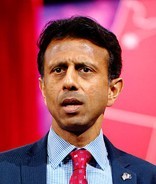 Gage Skidmore
Gage Skidmore Bobby Jindal
Who is he? A former Rhodes Scholar, he’s the outgoing governor of Louisiana. He previously served in the U.S. House.
Is he running? Probably. He announced on May 18 that he is forming an exploratory committee, with a final decision to come after Louisiana’s legislative session ends on June 11.
Who wants him to run? It’s hard to say. Jindal has assiduously courted conservative Christians, both with a powerful conversion story (he was raised Hindu but converted to Catholicism in high school) and policies (after other governors reversed course, he charged forward with a religious-freedom law). But he still trails other social conservatives like Ted Cruz and Mike Huckabee.
Can he win the nomination? Probably not. Jindal still lacks traction at the national level, he faces an overcrowded field of social conservatives, and his stewardship of the state of Louisiana has come in for harsh criticism even from staunch fiscal conservatives. It’s hard to see how he gains momentum from here.
When will he announce? June 24.
What else do we know? In 1994, he wrote an article called “Physical Dimensions of Spiritual Warfare,” in which he described a friend’s apparent exorcism.
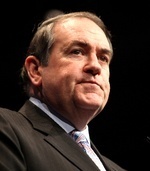 Gage Skidmore
Gage Skidmore Mike Huckabee
Who is he? An ordained preacher, former governor of Arkansas, and Fox News host, he ran a strong campaign in 2008, finishing third, but sat out 2012.
Is he running? Yes. He kicked off the campaign May 5.
Who wants him to run? Social conservatives; evangelical Christians.
Can he win the nomination? Huckabee's struggle will be to prove that he's still relevant. Since he last ran in 2008, a new breed of social conservatives has come in, and he'll have to compete with candidates like Ted Cruz. His brand of moral crusading feels a bit out of date in an era of widespread gay marriage—not least when curiously chose to attack Beyoncé. (His statements in support of Josh Duggar have also earned him criticism and quizzical reaction.) He faces fire from strict anti-tax conservative groups for tax hikes while he was governor. And fundraising has always been his weak suit. But Huckabee's combination of affable demeanor and strong conservatism resonates with voters.
What else do we know? Here is Huckabee's launch teaser video, with plenty of contrast with the Clintons.
Does his website have a good 404 page? It’s pretty good.
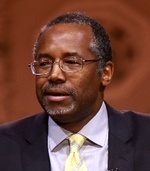 Gage Skidmore
Gage Skidmore Ben Carson
Who is he? A celebrated former head of pediatric neurosurgery at Johns Hopkins, Carson became a conservative folk hero after a broadside against Obamacare at the 2013 National Prayer Breakfast.
Is he running? Yes, after a May 4 announcement.
Who wants him to run? Grassroots conservatives, who have boosted him up near the top of polls, even as Republican insiders cringe. Carson has an incredibly appealing personal story—a voyage from poverty to pathbreaking neurosurgery—and none of the taint of politics.
Can he win the nomination? Almost certainly not. Carson's politics are conservative on some issues, but so eclectic as to be nearly incoherent overall. He's never run a political campaign, and has a tendency to do things like compare ISIS to the Founding Fathers. It's hard to imagine his candidacy surviving more serious scrutiny, but then again he's reportedly building an impressive political organization, especially in Iowa.
Does his website have a good 404 page? No.
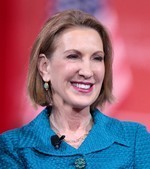 Gage Skidmore
Gage Skidmore Carly Fiorina
Who is she? Fiorina rose through the ranks to become CEO of Hewlett-Packard from 1999 to 2005, before being ousted in an acrimonious struggle. She advised John McCain’s 2008 presidential campaign and unsuccessfully challenged Senator Barbara Boxer of California in 2010.
Is she running? Yes, as of a May 4 announcement.
Who wants her to run? It isn’t clear what Fiorina’s constituency is. She’s a former CEO of Hewlett-Packard, but there are other business-friendly candidates in the race, all of whom have more electoral experience.
Can she win the nomination? Almost certainly not. Fiorina’s only previously political experience was a failed Senate campaign against Barbara Boxer in 2010. She has mostly been serving the role of harasser in the race so far, stirring up the news with slams on environmentalists for causing droughts (your guess is as good as mine), Obama for backing net neutrality, and Apple’s Tim Cook for speaking out on Indiana’s Religious Freedom Restoration Act. Mainly, though, she has strongly criticized Hillary Clinton, and some Republican strategists like the optics of having a woman to criticize Clinton so as to sidestep charges of sexism. Fiorina seems to be wowing voters in Iowa, but that hasn’t translated into national support—yet.
What else do we know? Fiorina's 2010 Senate race produced two of the most entertaining and wacky political ads ever, "Demon Sheep" and the nearly eight-minute epic commonly known as "The Boxer Blimp."
Does her website have a good 404 page? No.
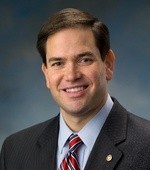 Wikimedia
Wikimedia Marco Rubio
Who is he? A second-generation Cuban-American and former speaker of the Florida House, Rubio was catapulted to national fame in the 2010 Senate election, after he unexpected upset Governor Charlie Crist to win the GOP nomination.
Is he running? Yes—he announced on April 13.
Who wants him to run? Rubio enjoys establishment support, and has sought to position himself as the candidate of an interventionist foreign policy.
Could he win the nomination? Charles Krauthammer pegs him as the Republican frontrunner. His best hope seems to be to emerge as a consensus candidate who can appeal to social conservatives and hawks, and he's even sounded some libertarian notes of late. He's well-liked by Republicans, and has surged forward since announcing, but he needs to move up from second choice to first choice for more of them. Rubio seems to scare Democrats more than any other candidate, too.
Does his website have a good 404 page? It’s decent.
 Wikimedia
Wikimedia Rand Paul
Who is he? An ophthalmologist and son of libertarian icon Ron Paul, he rode the 2010 Republican wave to the Senate, representing Kentucky.
Is he running? Yes, as of April 7.
Who wants him to run? Ron Paul fans; Tea Partiers; libertarians; civil libertarians; non-interventionist Republicans.
Can he win the nomination? That depends who you ask. The Kentucky senator would be an unorthodox pick, with many positions outside his party's mainstream. He's relatively permissive on drugs, passionate about civil liberties, and adamantly for restraint on foreign policy. But Paul has worked hard to firm up establishment ties since reaching the Senate, and he has recently worked to paper over his differences with GOP’s hawkish wing, calling for a declaration of war against ISIS and generally saber-rattling. He is positioning himself as a candidate with crossover appeal in the general election, and his announcement email mocked the idea that only an establishment candidate can win a general election.
What else do we know? One of Paul's greatest strengths is the base bequeathed to him by his father, three-time presidential candidate and former Representative Ron Paul. But as The Washington Post has reported, his father is also Senator Paul's biggest headache.
Does his website have a good 404 page? No.
 Wikimedia
Wikimedia Ted Cruz
Who is he? Cruz served as deputy assistant attorney general in the George W. Bush administration and was appointed Texas solicitor general in 2003. In 2012, he ran an insurgent campaign to beat a heavily favored establishment Republican for Senate.
Is he running? Yes. He launched his campaign March 23 at Liberty University in Virginia.
Who wants him to run? Hardcore conservatives; Tea Partiers who worry that Rand Paul is too dovish on foreign policy; social conservatives.
Can he win the nomination? Though his announcement gave Cruz both a monetary and visibility boost, he still starts with some serious weaknesses. Much of Cruz's appeal to his supporters—his outspoken stances and his willingness to thumb his nose at his own party—also imperil him in a primary or general election, and he's sometimes been is own worst enemy when it comes to strategy. But Cruz is familiar with running and winning as an underdog.
Does his website have a good 404 page? No.
 Gage Skidmore
Gage Skidmore Jeb Bush
Who is he? The brother and son of presidents, he served two terms as governor of Florida, from 1999 to 2007.
Is he running? Almost certainly.
Who wants him to run? Establishment Republicans; George W. Bush; major Wall Street donors.
Can he win the nomination? No one really knows. Since jumping into the race, he has continued to poll well and raise lots of money. He seems like a lock to rack up all-important endorsements from top Republicans. But predictions that he would quickly come to dominate the field have not come to pass, and while many analysts predicted that his moderate record would cause trouble in Iowa and with grassroots activists, that problem seems to be deeper than expected. His poll numbers are probably helped by his name, which is a double-edged sword.
When will he announce? No sooner than June, per The Washington Post.
What else do we know? Since Bush's surprise announcement, he has tended to stay fairly quiet, delivering some big speeches and hitting fundraisers, but not making a great number of trips to Iowa or New Hampshire.
Does his website have a good 404 page? No.
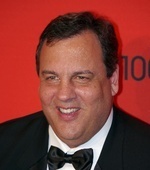 David Shankbone
David Shankbone Chris Christie
Who is he? What’s it to you, buddy? The combative New Jerseyan is in his second term as governor and previously served as a U.S. attorney.
Is he running? It seems ever harder to imagine. With indictments of two of his former top aides in early May, and a guilty plea by a high-school friend and political appointee, the George Washington Bridge scandal has crept ever closer to him. The New York Times says he's trying to "salvage" his campaign. Christie does have some campaign infrastructure in place in New Hampshire, which is close to his home state, with staffer hires and town-hall meetings there. He has also formed a political-action committee.
Who wants him to run? Moderate and establishment Republicans who don't like Bush or Romney; big businessmen, led by Home Depot founder Ken Langone.
Can he win the nomination? The tide of punditry had turned against Christie even before the "Bridgegate" indictments. It's hard to imagine how he recovers at this point, given the crowded field and the fact that Jeb Bush seems to dominate the moderate end of the Republican Party. Citing his horrific favorability nominations, FiveThirtyEight bluntly puns that "Christie's access lanes to the GOP nomination are closed." A recent Monmouth University poll showed him trailing even Donald Trump (see below) for the nomination. Plus, he'd probably have to resign as governor to run, because of SEC rules that cover donations from companies that do business with the state. With such high stakes, he might not want to run at all if he doesn't see a clear path to win.
When will he announce? According to Time, Christie has told donors that running is harder than he had realized, and that he may have to push back an announcement to as late as June.
What else do we know? If you can tell what is going on in this GIF, please let me know. Is he tossing the jacket away? Or catching it? And what does it mean?
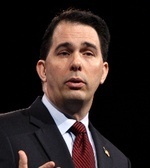 Gage Skidmore
Gage Skidmore Scott Walker
Who is he? Elected governor of Wisconsin in 2010, Walker earned conservative love and liberal hate for his anti-union policies. In 2013, he defeated a recall effort, and he won reelection the following year.
Is he running? Almost certainly.
Who wants him to run? Walker's record as governor of Wisconsin excites many Republicans. He's got a solid résumé as a small-government conservative. His social-conservative credentials are also strong, but without the culture-warrior baggage that sometimes brings. And Walker has won three difficult elections in a blue-ish state.
Can he win the nomination? No one knows. For all his strengths, Walker has never run a national campaign and isn't exactly Mr. Personality. But Jeb Bush's emergence seems to have helped Walker, propelling him to the front of the pack as a more conservative alternative to Bush. He's now solidly in the top tier of candidates.
When will he announce? June.
What else do we know? Barack Obama took a shot on April 7 at Walker for his criticism of a nuclear-deal framework with Iran. That's a sign that he's becoming a power player, and sniping from the White House is only likely to elevate Walker's standing with Republicans. Good news, bad news: Walker has a geographic advantage in his proximity to Iowa, but a potential biological disadvantage from his allergy to dogs.
 Gage Skidmore
Gage Skidmore Rick Perry
Who is he? George W. Bush’s successor at governor of Texas, he entered the 2012 race with high expectations, but sputtered out quickly. He left office in 2014 as the Lone Star State’s longest-serving governor.
Is he running? Very likely.
Who wants him to run? Small-government conservatives; Texans; immigration hardliners; foreign-policy hawks. Noah Rothman makes a case here. (Perry's top backer four years ago, non-relative Bob Perry, died in 2013.)
Can he win the nomination? Maybe, but who knows? Perry and his backers insist 2016 Perry will be the straight shooter who oversaw the so-called Texas miracle, not the meandering, spacey Perry of 2012. We'll see. Perry has also made a point of quietly spending lots of time in Iowa, a strategy he didn’t use in 2012—but which Rick Santorum used very successfully.
When will he announce? June 4.
 Gage Skidmore
Gage Skidmore Sarah Palin
Who is she? If you have to ask now, you must not have been around in 2008. That’s when John McCain selected the then-unknown Alaska governor as his running mate. After the ticket lost, she resigned her term early and became a television personality.
Is she running? A bizarre speech in January made a compelling case both ways.
Who wants her to run? Palin still has diehard grassroots fans, but there are fewer than ever.
Can she win the nomination? No.
When will she announce? It doesn't matter.
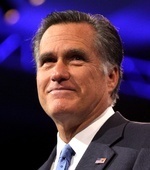 Gage Skidmore
Gage Skidmore Mitt Romney
Who is he? The Republican nominee in 2012 was also governor of Massachusetts and a successful businessman.
Is he running? Nah. He announced in late January that he would step aside.
Who wanted him to run? Former staffers; prominent Mormons; Hillary Clinton's team. Romney polled well, but it's hard to tell what his base would have been. Republican voters weren't exactly ecstatic about him in 2012, and that was before he ran a listless, unsuccessful campaign. Party leaders and past donors were skeptical at best of a third try.
Could he have won the nomination? He proved the answer was yes, but it didn't seem likely to happen again.
 Gage Skidmore John Bolton
Gage Skidmore John Bolton Who is he? A strident critic of the UN and leading hawk, he was George W. Bush’s ambassador to the UN for 17 months.
Is he running? Nope. After announcing his announcement, in the style of the big-time candidates, he posted on Facebook that he wasn’t running.
Who wanted him to run? Even among super-hawks, he didn’t seem to be a popular pick, likely because he had no political experience.
Could he have won the nomination? Quantum physics teaches that anything is possible, but this would push it. A likelier outcome could be a plum foreign-policy role in a hawkish GOP presidency.
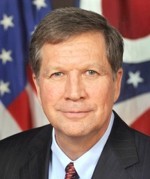 Wikimedia
Wikimedia John Kasich
Who is he? The current Ohio governor ran once before, in 2000, after a stint as Republican budget guru in the House. Between then and his election in 2010, he worked at Lehman Brothers. Molly Ball wrote the definitive profile in April.
Is he running? Almost certainly. He has visited early states, laid out ideas, and established a PAC.
Who wants him to run? Kasich’s pitch: He’s got better fiscal-conservative bona fides than any other candidate in the race, he’s proven he can win blue-collar voters, and he’s won twice in a crucial swing state. While his polling isn’t stellar, he still leads Graham, Fiorina, and Jindal.
Can he win the nomination? As Ball noted, Kasich seems in some ways perfectly suited to this race; in other ways, his insistent anti-charisma makes it hard to imagine him winning, and his attitude is amusingly blasé: “If they like it, great. If they don’t like it, I’ll play more golf.” He could be hurt by his embrace of Medicaid expansion under Obamacare, a move he had to circumvent the Republican-led General Assembly to make.
When will he announce? After June 30.
What else do we know? He doesn’t own a smartphone, and seldom uses a computer. Maybe he can be friends with Lindsey Graham—the old way, via U.S. Mail.
Donald Trump
Is he running?

Others Still in the Mix:
Bob Ehrlich, Peter King, Harold Stassen, Jim Gilmore









'Unfortunately, We Had to Take His Life'

Other than his surreal death, there is little public information about Usaama Rahim, the 26-year-old Muslim man, who was shot and killed on a Boston street on Tuesday morning.
Authorities say Rahim was wielding a military-style knife with an eight-inch blade when he was confronted outside a CVS in Roslindale by law-enforcement officials, who were said to be surveilling him around the clock. An official told The New York Times that Rahim had been radicalized, posed an “imminent threat,” and, more specifically, had sought to behead a police officer. (This statement was slightly undercut by FBI officials who told reporters on Tuesday that Rahim had been a threat, but not a “concern for public safety.”)
Officers reportedly approached Rahim without drawing their firearms. They called on him to drop his weapon, and then backed up 15 to 20 yards, before opening fire. “Unfortunately, we had to take his life,” said Boston Police Commissioner William Evans.
Rahim’s older brother disputed the account, writing on Facebook that his brother had merely been waiting for a bus to go to work.
He was confronted by three Boston Police officers and subsequently shot in the back three times. He was on his cellphone with my dear father during the confrontation needing a witness.
The elder Rahim relayed that his brother’s final words were “I can’t breathe.” This report, along the shocking nature of the incident, invited some criticism of law-enforcement procedure and the media’s coverage of the events.
But on Wednesday, police screened surveillance video for activists and community leaders, which appeared to back some aspects of the official account. “What the video does reveal to us, very clearly, is that the individual was not on the cellphone. The individual was not shot in the back,” Darnell Williams, president of the Urban League of Eastern Massachusetts, told The Boston Globe.
Other details remained less clear. Abdullah Faaruuq of the Mosque for the Praising of Allah, who also viewed the video, described it as “inconclusive,” and said that it was not clear to him that Rahim was wielding a knife. He and other communal leaders continue to raise questions about the encounter.
On Tuesday evening, authorities gathered in Everett, Massachusetts, to arrest David Wright, a man whom they claim had been plotting with Rahim. Sources told CBS News that “Rahim and Wright were communicating with each other about attacks in the U.S., which is why Wright was arrested.”
Wright is scheduled to appear in federal court on Wednesday, and prosecutors may produce more information at that time. Until then, Rahim becomes the latest terror suspect killed in an encounter with law enforcement in circumstances that raise unanswered questions. A spokesman for the Council of American-Islamic Relations offered a few of them:
It is our duty to question every police-involved shooting to determine if the use of deadly force was necessary, particularly given the recent high profile shootings of African-American men. We are asking for an independent and thorough investigation, public release of the video and transparency, not only about the killing of Usaama Rahim, but also about the basis of monitoring and surveillance, which had not resulted in probable cause for any arrest or search warrant.









Where Are the China Hawks?

On Monday, Lindsey Graham announced his presidential candidacy in a speech devoted mostly to foreign policy. He mentioned variations of the word “Islam” six times. He said “the nuclear ambitions of the radical Islamists who control Iran” constitute the “biggest threat” to the United States. He twice emphasized his devotion to Israel. And once, about halfway through his remarks, he mentioned China.
In American politics today, especially in the GOP, Graham’s priorities are typical. Two years ago, during Secretary of Defense nominee Chuck Hagel’s contentious seven-and-a-half-hour grilling by the Armed Services Committee, senators mentioned Israel 178 times and Iran 171 times. The number of references to China? Five.
Related Story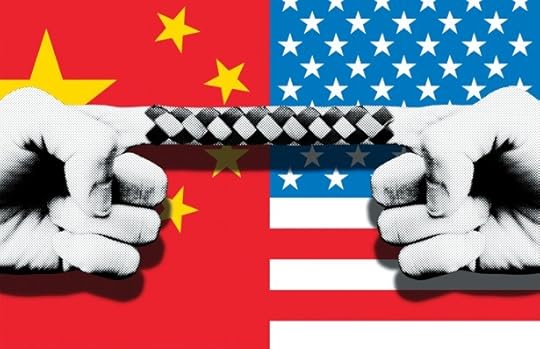
Why the U.S. Needs to Listen to China
The emphasis is odd because it’s likely that the “biggest threat” to America’s national security is neither Iran nor “radical Islam” writ large. It is China.
The Islamic extremists in ISIS and other violent jihadist groups kill between 10 and 20 Americans a year. That number could spike dramatically, of course, as it did on 9/11. But for many years now, the trend has been toward lone-wolf-style attacks where very small numbers of Americans die.
For its part, Iran is a midsize power with a noxious regime. It aspires to dominate the Middle East, but it is likely to fail in that endeavor. It’s likely to fail in part because the other powerful countries in the region (Israel, Saudi Arabia, Egypt, Turkey), backed by the United States, want it to fail. And it’s likely to fail because, as a Shiite power in a mostly Sunni region inflamed by Sunni-Shiite conflict, Iranian domination doesn’t have much appeal.
Of course, if Iran develops a nuclear weapon, or even a nuclear-weapons capacity, its power will grow. But it will still face neighbors—Israel, Pakistan, India—with larger nuclear arsenals of their own. And there is no reason to believe that Tehran will commit regime suicide by using a nuclear weapon against Israel or anyone else, and thus invite a massive nuclear response, given that it has proved emphatically non-suicidal during its 36 years in power.
China, by contrast, is not a midsize power. It’s a superpower. At current prices, its GDP is 28 times larger than Iran’s. Its military budget is roughly 13 times larger. Its willingness to invest vast sums in the economic development of other nations gives it tremendous soft power. And it is claiming much of the South China Sea as its own, thus asserting dominion over a territory with vast oil and gas reserves through which one-third of the world’s shipping travels.
From 1941 to 1989, the United States risked war to prevent great powers from dominating the world’s economic and industrial heartlands, and thus gaining veto power over America’s ability to conduct international commerce. That’s what China is seeking today.
When historians look back at this era in American history, they’ll find the lack of political debate about China astounding.So why aren’t Lindsey Graham and his GOP presidential competitors talking more about China? (To be fair, Hillary Clinton isn’t talking much about China either. But her campaign thus far has been much less weighted toward foreign policy in general.)
Three reasons come to mind.
The first is that the Chinese threat isn’t visually spectacular. What made ISIS a household name in the United States last year, even more than the group’s territorial gains, were its gruesome murders, especially of Westerners. The horrific images of those killings, broadcast endlessly on television, bred a primal fear that Washington politicians were quick to exploit. Those politicians pressured the Obama administration to begin its bombing campaign in Iraq and Syria, which gave the story even more juice because the United States was now at war.
Via the catchall of “radical Islam,” American politicians have transferred some of the anxiety sparked by ISIS to Iran: Today they have butcher’s knives; tomorrow, nukes! By contrast, China’s incremental moves to build islands in the South China Sea or even ram the occasional Filipino fishing boat produce far less drama. No matter how serious a challenge they pose to America’s role in the Pacific, they don’t appear to threaten American lives. And they won’t—until a confrontation between the Chinese and American militaries, in disputed ocean or airspace, raises the prospect of war. Until that happens, China’s challenge will remain on Page A17 of the newspaper.
The second reason presidential candidates devote so much more attention to “radical Islam” than to China is money. There’s no conspiracy here. Sheldon Adelson, who along with the Koch brothers is the most influential donor in today’s GOP, proudly acknowledges that, for him, Israel’s “security”—and thus, Iran’s nuclear program—is issue number one. And there are mini-Adelsons backing all the leading Republican candidates who talk tough on Iran. China hawks, by contrast, are far harder to find in the GOP donor class. In fact, given the stake many financial and corporate types have in U.S.-Chinese economic ties, it’s not clear that GOP donors even want GOP presidential candidates to take a hard line against Beijing.
The third reason is ideological. For the American right, it’s very important that U.S. adversaries be “evil.” From Whittaker Chambers, William F. Buckley, and Barry Goldwater in the first decades of the Cold War to Jerry Falwell, Jesse Helms, and Ronald Reagan in the 1970s and 1980s, conservatives insisted that the Soviet Union was both a geopolitical threat and a demonic force. On the right, the U.S.S.R. was often portrayed as not merely an ideological foe but a quasi-theological one. It’s no coincidence that Reagan called the Soviet Union an “evil empire” in a speech to the National Association of Evangelicals.
Today, “radical Islam” plays that same role. Its evil underscores America’s virtue, and its brutality toward Christians proves that, once again, the United States is fighting a religious war. It’s harder to portray China in that role. While still a dictatorship, it’s no longer a particularly ideological one. It’s not trying to spread an anti-democratic or anti-Christian creed across the globe. It’s simply trying to enrich its people and spread its power. Eventually, American conservatives—and some liberals—will likely find a way to depict Beijing as this era’s version of Nazi Germany and Soviet Russia. Americans always frame their geopolitical conflicts in ideological terms. But, for now, “radical Islam” is a much easier fit.
When historians look back at this era in American history, they’ll find the lack of political debate about China astounding. Then again, given the tenor of the GOP debate about “radical Islam,” maybe American foreign policy will be better off if the Republicans running for president leave well enough alone.









No One's Having Fun in the Entourage Movie

Hours removed from a viewing of Entourage, it’s hard to remember any salient plot details. Doug Ellin’s film adaptation of his HBO comedy series (which ran for eight seasons from 2004 to 2011) has all the familiar elements of the original: manicured L.A. excess, celebrity cameos, some mild Hollywood mockery, and plenty of dime-store misogyny from an ensemble that feels, at this point, only dimly self-aware about it.
Specifics, however, are much harder to grasp. Much like the TV show, there are almost no dramatic stakes attached to the adventures of movie star Vincent Chase and his chucklehead band of brothers, so all a big-screen version does is help magnify how ironically un-cinematic the whole thing is.
Related Story
The State of 2015's Summer Movies
No one would ever mistake Ellin, whose last feature film was the 1998 romantic comedy Kissing a Fool, for a bravura filmmaker, but even so, Entourage is depressingly tame from a visual perspective considering its moviemaking theme. It opens a few days after the show’s series finale—which saw Vincent Chase (Adrian Grenier) marry a Vanity Fair writer—with Vinnie celebrating that union’s annulment on a boat in Ibiza loaded with scantily clad models. Then, unexpectedly, he announces that for his return to cinema, he wants to star and direct. Eight months later, he’s deep in post-production on a modern update of Jekyll and Hyde called, well, Hyde, and trying to scrounge some extra funding together after blowing his budget.
Will he get the funding? Is the movie he makes good? Will various peons, including a Texan oil billionaire (Billy Bob Thornton), his pissant son (Haley Joel Osment), and a studio CEO (Alan Dale), try to stop them? It’s fair to assume that nothing can stand in Vincent Chase’s way, because Entourage is (and always has been) aspirational wish fulfillment about life in Los Angeles, laden with product placement, obnoxious party scenes, and easily accessible, consequence-free sex with nameless women for even the most putridly charmless characters.
Take Vince’s filmmaking “process,” which occurs entirely off-screen. Perhaps intentionally, the movie star has always been Entourage’s least engaging character, a blandly good-looking vegetable who glides through drama with a placid, it’ll all work out fine look on his face because things always, inevitably, work out fine for him. As a result, he’s barely in the (real) film he’s technically the star of, telling his manager-BFF, Eric (Kevin Connolly), that he needs some extra money to polish off the visual effects, and leaving E and his super-agent (turned Hollywood exec) Ari Gold (Jeremy Piven) to wrangle that cash from the financiers. Vince spends most of Entourage embroiled in a casual romance with the actress/model Emily Ratajkowski, and even that takes place off-screen.
The antics are left to Eric; Ari; Vince’s brother, Johnny Drama (Kevin Dillon); and his former driver, Turtle (Jerry Ferrara), who’s become a mansion-dwelling tequila magnate, and thus equally as boring as Vince. Dillon contributes occasional comic energy to the movie—hanger-on, has-been Johnny has some over-the-top pathos to his character—but everything else feels sapped of life. Eric inexplicably gets all of the onscreen lady action in the film, having dalliances with two women at separate parties even though his ex-fiancée, Sloan (Emmanuelle Chriqui), is heavily with child and contemplating getting back together with him. Ari, the breakout star of the show in its early seasons, is seeking to control his temper at his wife’s behest, but even if he wasn’t, Piven’s mastery of the profane freakout lost its luster years ago.
When Liam Neeson giving Ari the finger is your biggest cameo, you might want to go back to the drawing board.In its early seasons, Entourage the show had a gross but charming edge to it, finding the sweeter side in the connection between its legion of dolts, but the show long outstayed its welcome on HBO before becoming this undeserved cinematic event. The action consists mostly of phone calls and throwaway conversations on the freeway—not dissimilar from the show, but a lot easier to get away with in 30-minute chunks. Entourage the film runs 104 minutes and feels even longer, lacking even the star power you might have hoped a silver-screen version could afford. When Liam Neeson giving Ari the finger is your biggest cameo, you might want to go back to the drawing board.
But it’s not like there are further resources to tap. If nothing else, Entourage is true to form—an irritating boys-will-be-boys confection that lets its heroes have their silly, sexy fun before being reeled back in by one-dimensional female bastions of stability. Ari’s wife and Eric’s girlfriend may be boring scolds, but they represent the safe, dull security of middle-of-the-road life that Ellin clearly thinks his audience wants to leave behind for two hours. Yes, Vincent Chase will always get what he wants, and even though what little we see of Hyde looks like toxic waste, we’re told it’s a brilliant, acclaimed effort. These boys get to have all the fun, Ellin wants viewers to think. But if this is what fun looks like, you might be better off staying home.









The Art of Impersonation
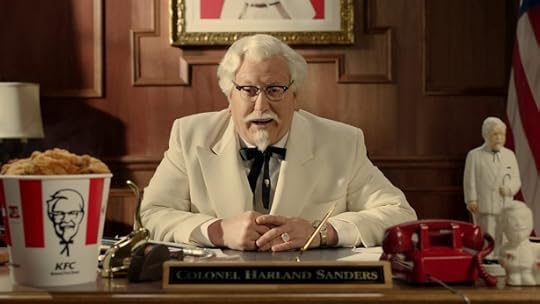
Among the many skills that enabled Darrell Hammond to become the longest-tenured cast member at Saturday Night Live is for his knack for impersonation. During the heights of the various scandals that consumed both daytime and evening American television in the late 1990s, Hammond’s portrayal of President Bill Clinton became something of a standard under the lamps of Studio 8H in 30 Rockefeller Center.
Of course, Hammond didn’t just Clinton. He also Gored, Conneryed, D’Amatoed, Dr. Philled, Dubyaed, Nixoned, Cartered, Falwelled, Mizrahied, Husseined, Shatnered, and Cronkited.
Over 14 seasons, Hammond played nearly a hundred others on the show. According to legend, the performer’s record for celebrity impressions was only recently surpassed by cast member Kenan Thompson. Last year, Hammond returned to SNL to replace Don Pardo, the only other announcer in the history of the show, who passed away in August. And he’s also turned to impersonation once again, playing Kentucky Fried Chicken’s reincarnation of Colonel Harland Sanders in a series of ads that launched last month.
Replicating such a distinctive and once-living commercial icon is fraught with challenges. I talked with Hammond last week to ask him what goes into the process of composing a sketch of a real character.
Researching the Dialect
“First, you have to determine where they’re from. How long did they live there? That means, does he have a dialect and, if so, how thick is it?
“We have what’s called an ‘educated dialect,’ where a person is born in one region and they move somewhere else, so their dialect is affected by the cultural education they get when they move from, say, Alabama to Spokane, for instance. So you have to find that.”
Searching for an Irregularity
“Then you find if the voice is high or if it’s low and does he have any sort of irregularity—such as tongue in teeth like [James] Gandolfini had, an irregular speech pattern. Bob Costas, on the other hand, has perfect speech and is not very easy to do.
“My approach has always been to italicize all these features. It’s not a photograph, but on some level it’s more telling than a photograph.” “Albert Hitchcock” / Al Hirschfeld
“Albert Hitchcock” / Al Hirschfeld “You hope there’s something a little irregular there. Then you pick a couple of hand gestures. But then after you do all of that and you sort of duplicate the person, my approach has always been to—I don’t know if you’re familiar with the artist [Al] Hirschfeld—italicize all these features. It’s not a photograph, but on some level it’s more telling than a photograph.
“That’s something I worked out with Lorne Michaels on everything that I ever did on SNL. You start out as accurate as you can be and then when you start working with the writers, the writers write like you talk and you start talking like they write and the next thing you know, a photograph has been turned into a Hirschfeld. That’s sort of the idea that I try for.
“The thing about SNL is, you only have a few hours to prepare. It’s not often that you get to do a repeat character. Clinton was different a year later. Colonel Sanders will evolve a little bit too as we work with the writers.”
Determining the Challenge
“It [Colonel Sanders] wasn’t as challenging as you would think, growing up in the South. The good thing about the Colonel is that he has a slightly irregular [speech pattern].
“The [recorded] phrase I kept going off of and that I auditioned with for KFC was ‘Two-four-six-eight, what do we appreciate?’ So you hear when I say ‘se-se-se’ for six, it’s slightly irregular, so you have that to hold onto. The rest of it is the dialect which comes fairly naturally for me being from the South.
“After that we developed his laugh because we knew from all the videos you ever watch of the guy and you talk to people at KFC about the guy, he really enjoyed his life. He was an eccentric guy. There’s something compelling about a guy who’s utterly himself and to be that guy.”









June 2, 2015
Mitch McConnell and Rand Paul Fight Over the Patriot Act—and Both Lose
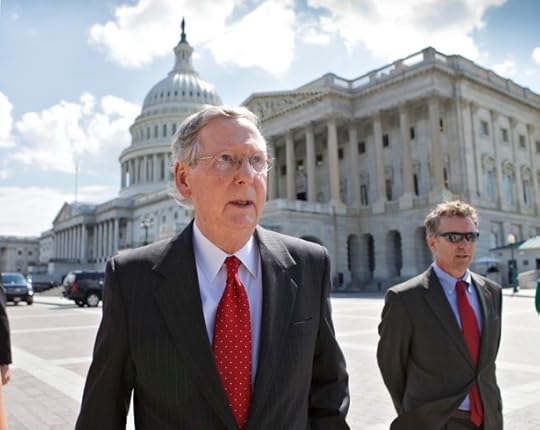
For the last two weeks, Mitch McConnell and Rand Paul have offered competing visions for balancing national security and civil liberties in the original post-9/11 anti-terror law, the USA Patriot Act. On Tuesday, both Kentucky Republicans lost.
Their defeat came at the hands of 67 fellow senators, who voted to endorse a compromise between their two visions and pass the USA Freedom Act—a bill that extends the Patriot Act while ending the NSA’s bulk collection of telephone metadata. The House approved that measure last month, and it now heads to President Obama’s desk for his signature.
The battle between McConnell and Paul was an awkward one, to say the least. The two are reluctant allies, and the establishment-friendly majority leader has endorsed Paul’s candidacy for the presidency despite trying to keep him out of the Senate five years ago. But they are miles apart when it comes to national security and foreign policy, and neither of them tried to paper over their differences over the Patriot Act. Paul has joined privacy advocates in criticizing the reforms in the Freedom Act as too weak, and he won a temporary victory Sunday night when his objections on the Senate floor forced the NSA to halt a trio of Patriot Act programs that expired at midnight.
But ultimately, a bipartisan consensus in favor of modifying—but not gutting—government spy programs held, and the Freedom Act passed after Paul had exhausted his ability to delay action in the Senate. The defeat was far more embarrassing to the hawkish McConnell, who found that 14 years after the terrorist attacks of September 11, his uncompromising view of government surveillance power is suddenly a minority position in the Republican Congress. McConnell tried repeatedly and in vain to extend the Patriot Act without revision, but each time he was thwarted by a coalition that demanded changes to the NSA program first exposed by Edward Snowden.
Related Story
The NSA's Phone Spying Program Has Been Put on Hold
The final rebuke of the majority leader came on Tuesday afternoon, when he sought to amend the Freedom Act and send it back to the House. He did so in the face of warnings from the GOP leadership in the House that the changes wouldn’t fly there. Two of the amendments were of the face-saving variety; one would have given the NSA an additional six months to transition away from its data-collection program, while another would have required a certification that the phone companies—the new designated stewards of bulk metadata—were capable of collecting and retaining the data as intended. A third amendment was more controversial and would have weakened a provision creating a watchdog for the Foreign Intelligence Surveillance Court. The Senate rejected all three changes before passing the House bill on a 67-32 vote.
The version that passed on Tuesday was the same as the one McConnell defeated 10 days ago, before the Senate took a weeklong break, and before it allowed the expiring Patriot Act provisions to lapse. He reacted angrily on the Senate floor, denouncing Democrats and the Obama administration, which actually played little role in his fight with Paul. All the Freedom Act does, McConnell complained, was “take one more tool from those who defend liberty every day.”
Still, there was little doubt that he had miscalculated—both in assessing the broad support for a middle ground, and in Paul’s willingness to wage so aggressive—and politically advantageous—a battle on an issue central to his brand. Thanks in part to Snowden, Congress may have moved in Paul’s direction over the last few years, but it isn’t fully on board with his fight against the Patriot Act. The difference was that unlike McConnell, Paul knew he would eventually lose his fight. He just didn’t care.









With Kung Fury, Culture Reaches Peak Nostalgia

The premise of Kung Fury is the stuff nonsensical B-movies and particularly elaborate fever dreams are made of. A Miami cop is struck by lightning and bitten by a cobra, which events give him magical kung fu powers that he uses to fight (in no particular order) a sentient arcade machine, the Norse god Thor, and Adolf Hitler.
The 30-minute movie was crowd-funded to the tune of $630,000 on Kickstarter, played at the Cannes Director's Fortnight, and has been distributed on YouTube, where it’s earned 11 million views in five days. David Hasselhoff performed its theme song. Considering its small budget, Kung Fury is a feat of technical genius, even though its imagery cynically appeals to its audience's nostalgia. As a one-off, it’s a hilarious trifle. But in the crowdfunded future, will all movies look like this?
There's a reason Kung Fury was such a Kickstarter phenomenon, after all. When it debuted on the crowdfunding website in December 2013, it came with a five-minute sizzle reel of the special effects Swedish director/star David Sandberg had cooked up with his own money. "It's an action comedy about a super kung-fu cop in Miami in the 1980s who decides to travel back in time in order to kill Adolf Hitler," Sandberg declared, somewhat matter-of-factly, to the 17,000-odd people who spent their money to help him achieve his vision. Shot entirely in front of a green screen, Kung Fury represents the leaps and bounds visual effects have made in the 11 years since the release of Sky Captain and the World of Tomorrow, a Hollywood action blockbuster starring Jude Law and Angelina Jolie that was filmed in a similar matter—but cost $70 million to make.
Related Story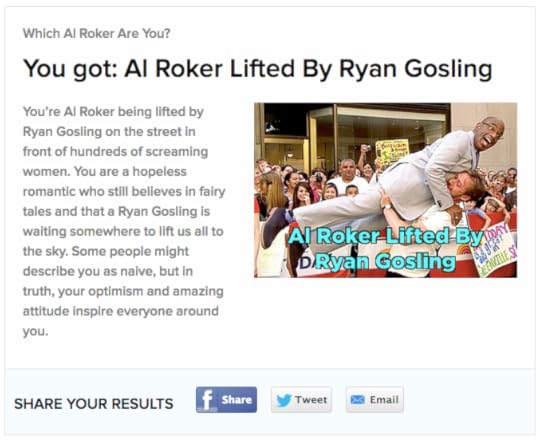
How the Internet Uses Nostalgia
Kung Fury doesn't quite have the sheen of Sky Captain or similar Hollywood green-screen epics like Sin City or 300. But it's not far off. Considering the film was shot at Sandberg's offices in Stockholm, piece by piece, with actors and extras doing their individual work before being composited into the computer-generated backgrounds of the film, Kung Fury is quite a jaw-dropping achievement. Sandberg wears his inspiration on his sleeve—seemingly every cheesy 80s action movie gets a nod, from the street gangs of Robocop to the dark Patrick Swayze heroics of Road House to the extended Nintendo ad campaign The Wizard.
But those were films made with the severe limitations of both their era and the rigid narrative formulas demanded by their studios. Kung Fury mocks those limitations by imitating them—its hero gets barked at by a grumpy boss who complains about City Hall, he jumps from location to location with little explanation (visiting the Viking era along with Hitler's Germany) and executes perfect action move after move with plenty of help from Sandberg's visual effects team. Any time there's a continuity error that requires shooting around (one actress was replaced between shooting the trailer and the full film), the screen blurs with VCR "tracking" static to make it look seamless.
From a storytelling perspective, these kinds of films have existed for years: The TV channel SyFy long produced Z-list creature features before realizing their viewing audience was largely tuning in to laugh at them. The network's programmers leaned into that reputation and created trashy gems like Sharknado, featuring stars (Tara Reid, Ian Ziering) whose careers had taken something of a nosedive. That film was made in 2013 for $2 million and runs for 85 minutes. Extrapolate out Kung Fury's budget to feature length and it would cost about the same—in fact, Sandberg promised a feature if he raised $1 million, although he didn’t hit that goal. But it looks much, much better.
It’s almost underwhelming that with such a blank canvas to work with, Kung Fury settled on fighting Hitler.These kinds of things always have diminishing returns, though. Sharknado has already produced two sequels—entry three is subtitled Oh Hell No! and features, among others, David Hasselhoff. As SyFy has dialed up the irony, interest levels have declined, although the profit margins remain tempting enough to surely guarantee a few more sequels. What makes Kung Fury stand out compared to SyFy's efforts is the obvious labor that went into crafting its visuals and the pure raging id of its plot: Sharknado works up some faux-science nonsense about a tornado hitting a school of sharks, but Kung Fury can conjure whatever villain its imagination allows. (It's almost underwhelming that with that blank a canvas to play with, Sandberg settled on fighting Hitler.)
But in the end, Kung Fury is a confection, and a rather cynical one at that—a perfect argument for the Kickstarter-to-YouTube model, which will reward projects that speak to the broadest online audience. What helps the film stand out from the pack is its technical mastery, but also the fact that everyone on the internet with a disposable income has seen a few 80s action movies.
The ultimate fear is that more and more entertainment plays to that low common denominator, appealing to the internet’s love of crisp visuals and nostalgia. While that genre will always exist, it’s hard to see it sustaining an entire industry. Family Guy has lasted for 13 seasons with a sense of reference-based humor that appeals to the same audience: nominally niche, but actually very broad. It's one thing to rack up YouTube views, but one wonders if we'll be talking about Kung Fury a year from now—or even a month.









Atlantic Monthly Contributors's Blog
- Atlantic Monthly Contributors's profile
- 1 follower



